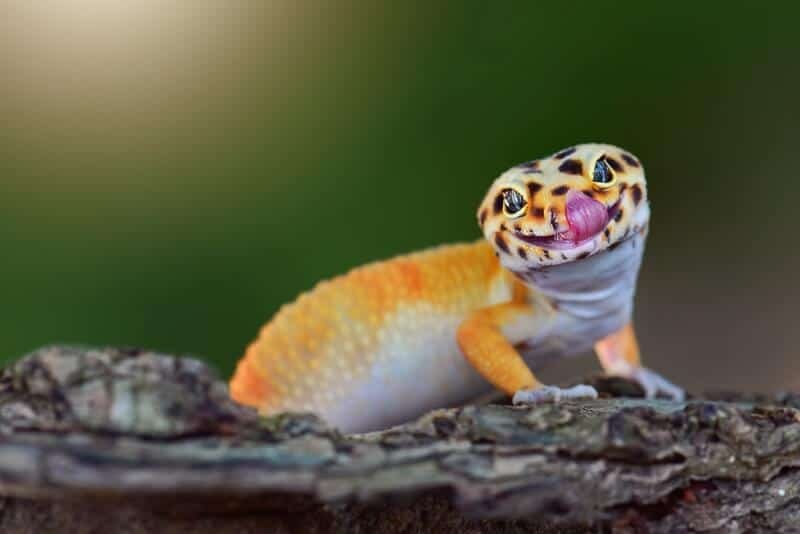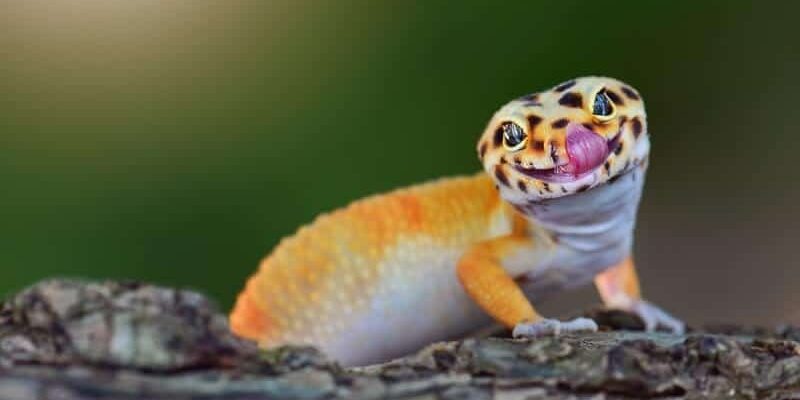
Understanding your leopard gecko’s behavior is essential for every reptile owner. You want your little buddy to be healthy and happy but spotting the signs of an eating problem can be tricky. Let’s dive in and break down the common causes of why your leopard gecko isn’t eating. We’ll cover everything you need to know to help get them back on track.
Environmental Factors
One of the first things to consider is the environment your leopard gecko lives in. Geckos are sensitive to temperature and humidity, so changes in these factors can lead to a loss of appetite. Think of it this way: if you’re too hot, too cold, or uncomfortable in your space, you might not feel like eating either!
Leopard geckos thrive best in a temperature range between 75°F to 90°F during the day, with a basking spot that reaches around 95°F. If the temperature in your gecko’s habitat is too low, it might feel lethargic and uninterested in food. On the other hand, if it’s too warm, it could lead to stress, which also affects eating habits.
Humidity is another critical factor. These geckos prefer humidity levels between 30% and 40%. Too much moisture can cause respiratory issues, while too little can lead to dehydration. Both scenarios can make your gecko less likely to eat.
Lighting and Day/Night Cycle
The lighting in your gecko’s habitat plays a crucial role, too. Leopard geckos are nocturnal, meaning they are more active at night. If your lighting is off or if they’re disturbed during their active hours, it might cause stress and a loss of appetite.
You should aim for a predictable day/night cycle. Using a timer for your lights can help keep the environment stable. Just like anyone else, geckos appreciate regularity. A gentle rhythm of light and dark helps them feel secure and encourages natural behaviors, including eating.
Stress and Anxiety
Stress can be a significant culprit when it comes to a leopard gecko refusing food. Imagine moving to a new place and feeling overwhelmed—it’s a similar feeling for your little guy. Changes in their habitat, such as introducing a new pet or even rearranging their tank, can trigger stress.
Signs of stress include hiding more often, becoming skittish, or displaying defensive behaviors. When stressed, your gecko may feel it’s not safe to eat. It’s essential to observe your pet. If they seem more anxious than usual, it might be time to reevaluate their surroundings and reduce any stressors.
If you suspect stress, try to minimize handling them for a while and create a calm, safe space. You might even consider giving them a hiding spot where they can feel secure. Sometimes, all it takes is a little TLC for them to return to normal eating habits.
Health Issues
If your leopard gecko hasn’t eaten for a while, it could be a sign of an underlying health issue. Just like us, geckos can experience various health problems that may affect their appetite. Common health issues include parasites, respiratory infections, or metabolic bone disease.
If your gecko is lethargic, has changes in stool, or shows any signs of distress—like prolonged hiding or abnormal behavior—it’s important to consult a reptile veterinarian. Regular vet check-ups can help catch any issues early, keeping your gecko healthy and happy.
Also, be mindful of their diet. Sometimes feeding them the same thing repeatedly can lead to boredom. Offer a variety of insects like crickets, mealworms, or even the occasional treat like waxworms. A well-rounded diet keeps their interest piqued and promotes better health.
Shedding Issues
A leopard gecko’s skin requires periodic shedding, and it’s a natural process for them. However, if they’re having trouble shedding, it can cause discomfort. This uncomfortable feeling can lead to a temporary loss of appetite.
Signs of shedding issues include retained skin around the toes or tail. If you notice your gecko struggling to shed, you can help by raising the humidity in their tank or providing a humid hide. Soaking them in a shallow, warm water bath can also help to loosen stubborn skin.
Once they shed successfully, it’s likely their appetite will return. Keeping an eye on their shedding process is crucial for ensuring they don’t face any difficulties, as it can lead to further health problems if left unaddressed.
Age and Breeding Cycles
Age and breeding cycles can also influence your leopard gecko’s eating habits. Juveniles tend to have healthy appetites, but as they mature, you might notice changes. It’s not uncommon for adult geckos, especially females, to eat less during the breeding season.
If your female leopard gecko has recently mated or is preparing to lay eggs, you might see a drop in her food intake. During this time, it’s crucial to provide high-quality nutrition to maintain her health. Ensure she’s getting enough calcium and vitamins to support her during this important period.
For older geckos, a decrease in appetite can also be part of the natural aging process. If your gecko is nearing the end of its lifespan, it may naturally eat less. If they show other signs of distress, though, consulting a vet is always a good idea.
If your leopard gecko isn’t eating, it’s vital to take a moment and assess the situation. By considering factors like the environment, stress, health issues, and even age, you can identify potential reasons behind their loss of appetite. It’s all about creating a comfortable and safe space for your scaly friend!
Remember, each gecko is unique, and understanding their specific needs takes time. If you’ve tried addressing these common causes and still have concerns, don’t hesitate to reach out to a veterinarian who specializes in reptiles. After all, your goal is to ensure your leopard gecko leads a happy and healthy life. Keep an eye on them, show some love, and they’ll likely be back to their munching ways soon!

